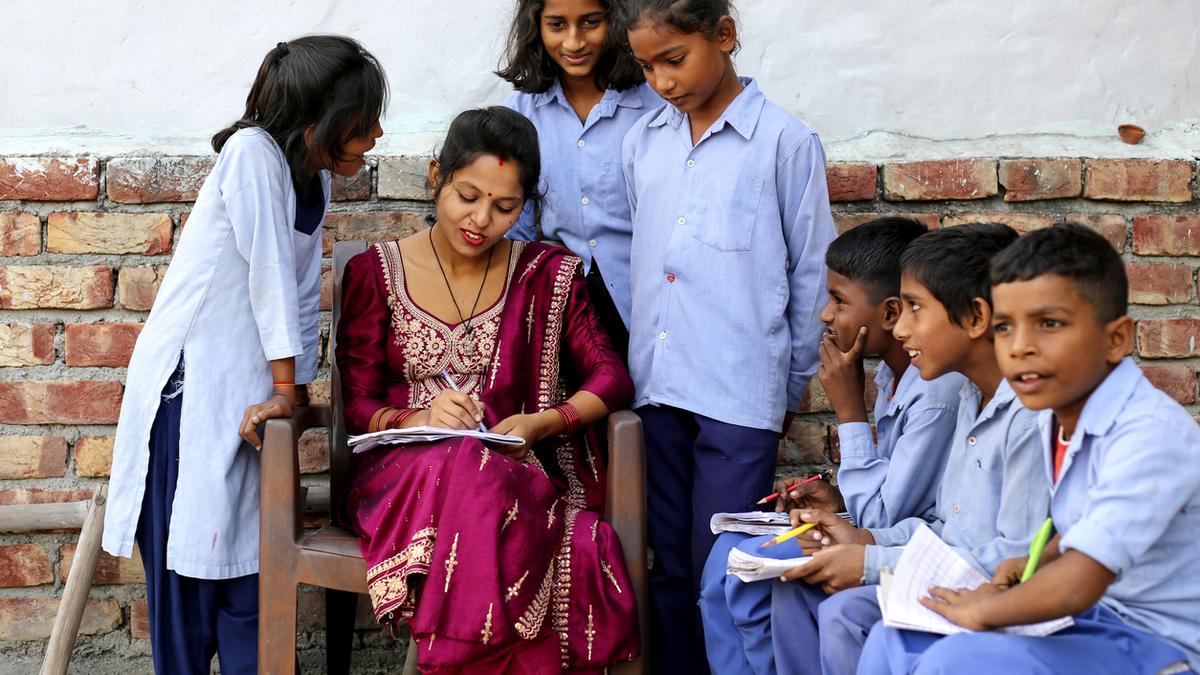Imagine a classroom where kids stumble over simple words or can’t add two numbers together. For years, this has been the sobering reality for millions of children across India, leaving them lost before they even had a chance to dream big. This educational crisis threatened not only individual futures but also our nation’s progress. The COVID-19 pandemic only deepened this crisis, amplifying fears of irreversible learning loss.
When the National Education Policy 2020 highlighted foundational literacy and numeracy (reading, writing, and basic math), Haryana took measurable steps in alignment. In July 2021, following the launch of the National Initiative for Proficiency in Reading with Understanding and Numeracy (NIPUN) Bharat mission, the State launched the NIPUN Haryana mission with a promise: that every child in a government school would gain the reading, writing, and Math skills. Four years later, the results of the sustained implementation of the mission have made its visibility significant at the national level.
From early learning to Class 5
From the beginning, NIPUN Haryana mission brought preschool called Balvatika III into over 8,600 primary schools, enrolling more than 86,000 five-year-olds in 2024-25. Early learning is sought to be made fun through the use of tools such as learning kits, rhymes, and the Vidya Pravesh school readiness program. The state has also set up 119 model Balvatikas, one in every educational block, to serve as examples for high-quality early learning.
The mission extends from these early learners all the way up to Grade 5, covering children between the ages of 5 and 11. Children receive fun, easy-to-use textbooks and workbooks each year, along with structured teaching and learning materials designed with inputs from the National Curriculum Framework and adapted for Haryana, making learning feel less like a chore and more like an adventure.
Over 35,000 teachers have been trained face-to-face for over 140 hours, learning new ways to make lessons stick. They’re not left on their own afterward either. Online asynchronous learning courses on platforms like DIKSHA keep them updated, and monthly meetups called Shala Sangams let them swap ideas with peers.
Then there are the ‘mentors’, over 1,500 of them, who drop into classrooms each month. They watch, guide, and cheer teachers on, using a customised ‘NIPUN Haryana’ app to log what they see. Some 7,400 school visits and more than 1 lakh spot assessments of students a month have been logged, providing valuable feedback for improvement.
So, how do we know it’s working?
In September 2024, a large-scale third-party NIPUN Haryana evaluation designed in alignment with international research standards assessed 22,708 students across 1,187 government schools. The findings revealed both gains and clear pathways for targeted improvement.
Students in Grades 2 and 3 displayed strong proficiency in listening comprehension, sentence reading, and reading comprehension, with Grade 3 students particularly excelling in core numeracy competencies such as number identification, addition, and multiplication. At the same time, the assessment flagged areas requiring further attention: reading fluency, word problem solving, and number pattern recognition.
These insights align closely with national data. According to the 2024 Annual Status of Education Report (ASER), the share of Haryana’s Grade 3 government school children demonstrating grade-level numeracy rose from 26.1% in 2022 to 33.1% in 2024, outperforming the national average. Grade 5 students, too, are now reading and calculating at levels above national benchmarks. But beyond the numbers lies a deeper story. These data points translate into children reading aloud to their siblings, helping parents with calculations at local shops, and engaging with their studies with growing self-assurance.
Technology has emerged as an enabler of Haryana’s learning transformation. Under the state’s e-Adhigam initiative, every teacher and mentor in government schools was equipped with internet-enabled smart tablets. These are being used to drive the implementation of NIPUN Haryana—from facilitating data-driven instruction to tracking student progress in real time.
Complementing these are mobile apps that simplify classroom observations and lesson planning, facilitating teachers, parents, and administrators to work in concert. Looking ahead, the introduction of Holistic Progress Cards will provide families with a more complete picture of each child’s development—not just academic scores, but also skills, strengths, and growth trajectories over time.
Connecting with families
Through initiatives like NIPUN Raftar (reading competitions) and NIPUN Ramleela (dramatisations of lessons), learning is sought to be part of dinner table conversations among families. Parents receive updates via key mission-related information via diverse channels, bridging the traditional gap between school and home. From local raginis and radio shows to school exhibitions and student-led storytelling, the mission has found creative ways to connect with families.
As India works toward achieving the ambitious goals of NEP 2020, Haryana offers valuable lessons: start early, invest in teachers, use technology wisely, involve communities, and continuously measure results. As the State steps into NIPUN Haryana 2.0, the mission is shifting gear, from expanding access to deepening outcomes, from delivering content to unlocking learning.
(Parmod Kumar is the State Programme Officer at Department of School Education, Haryana, and Sambhrant S is the Associate Director, State Reforms at Central Square Foundation)
Published – July 08, 2025 07:18 pm IST
